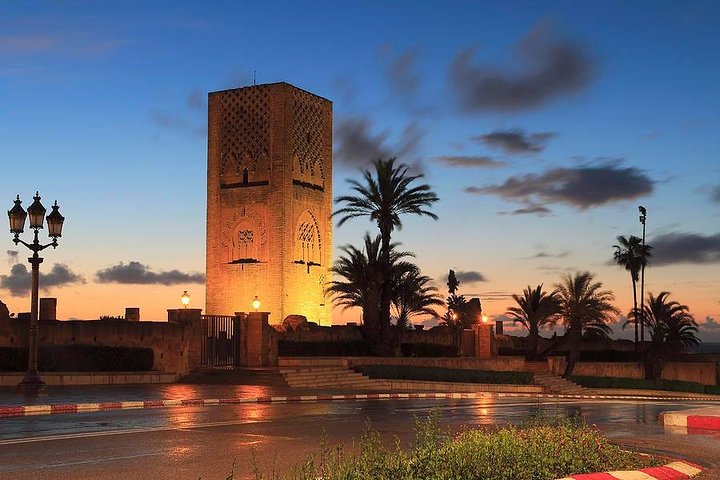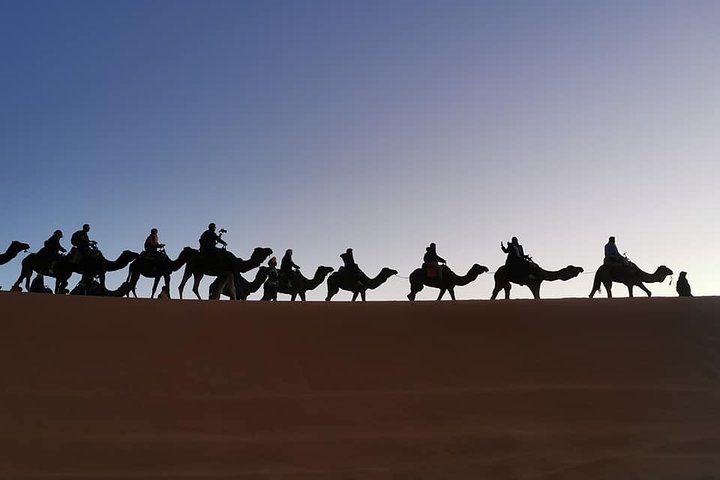Rabat’s Timeless Allure: A Day Trip Through History
Drawn by the allure of Rabat’s historical landmarks, I embarked on a day trip from Casablanca to explore the city’s rich tapestry of culture and history. Join me as I recount my journey through time, from the majestic Royal Palace to the enchanting Oudaya Kasbah.
A Journey Through Time: The Royal Palace and Chellah Ruins
As the sun rose over Casablanca, I embarked on a journey that promised to be a tapestry of history and culture. The drive to Rabat, a city that whispers tales of both Islamic and French-colonial influences, was a serene prelude to the day’s adventures. Our first stop was the Royal Palace, a majestic structure that stands as a testament to Morocco’s regal past. Though visitors are not permitted inside, the grandeur of its exterior was enough to evoke a sense of awe. The palace, with its intricate architecture, serves as a reminder of the country’s rich history and the enduring legacy of the Alawite sultans.
Next, we ventured to the Chellah ruins, a site that seamlessly blends Roman and medieval Muslim history. As I wandered through the remnants of ancient walls and pathways, I couldn’t help but feel a connection to the past. The ruins, now home to a surprising population of storks, offered a unique glimpse into the layers of history that have shaped Rabat. The storks, with their nests perched atop the ancient structures, added a living element to the historical narrative, a reminder of nature’s resilience and adaptability.
The Majestic Hassan Tower and Mausoleum of Mohammed V
Our journey continued to the Hassan Tower, an iconic symbol of Rabat’s architectural heritage. This unfinished minaret, standing tall against the sky, is a poignant reminder of the ambitions of the past. Adjacent to the tower lies the Mausoleum of Mohammed V, an architectural gem that houses the tombs of the revered Moroccan king and his sons. The mausoleum’s intricate design, with its white marble and green-tiled roof, is a testament to the artistry and craftsmanship that define Moroccan architecture.
As I stood in the presence of these monumental structures, I was struck by the sense of reverence that permeates the site. The Hassan Tower and the mausoleum together create a space that invites reflection on the passage of time and the enduring legacy of those who have shaped Morocco’s history. It was a moment to pause and appreciate the beauty of cultural preservation and the stories that these landmarks continue to tell.
The Enchanting Oudaya Kasbah and Andalusian Gardens
Our final destination was the Oudaya Kasbah, a fortified military camp that offers a glimpse into Rabat’s storied past. Walking through its narrow streets, I was transported to a time when the kasbah served as a strategic stronghold. The vibrant blue and white walls, adorned with intricate patterns, create a visual feast that captures the essence of Moroccan artistry.
Within the kasbah lies the Andalusian Gardens, a tranquil oasis that provides a respite from the bustling city. Although the gardens were closed during my visit, the mere thought of their lush greenery and vibrant blooms was enough to evoke a sense of peace. The kasbah, with its rich history and stunning views of the Bouregreg River, was a fitting conclusion to a day filled with exploration and discovery.
Reflecting on my journey, I am reminded of the importance of cultural immersion and the value of experiencing history firsthand. Rabat, with its blend of ancient and modern influences, offers a unique opportunity to connect with the past and appreciate the beauty of cultural diversity. This day trip was not just a journey through a city, but a journey through time, a reminder of the stories that continue to shape our world.

















































